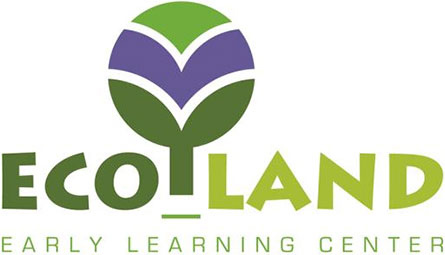Organisms
Click the tabs below to access editable, digital templates to use in your classroom. All resources are organized by topic and tied to the TEKS and PreK guidelines. Please note the "Instructions" tab should you need guidance in utilizing the templates. Happy learning!
Characteristics of Organisms
Exploring the Characteristics of Organisms...
PreK Guidelines: |
Kindergarten TEKS: |
Grade 1 TEKS: |
|
VI.B.1: Child observes, investigates, describes and discusses the characteristics of organisms.
|
K.13A: Identify the structures of plants,
including roots, stems, leaves, flowers, and fruits. K.13B: Identify the different structures that animals have that allow them to
interact with their environment such as seeing, hearing, moving, and grasping objects. K.13D: Identify ways that young plants resemble the parent plant.
|
1.13A: Identify the external structures of different animals and compare how those structures help different animals live, move, and meet basic needs for survival.
1.13C: Compare ways that young animals resemble their parents.
|
PreK Learning Objectives: |
Kindergarten Objectives: |
Grade 1 Objectives: |
|
The learner will observe, investigate, describe and discuss organisms' characteristics.
|
The learner will identify plant structures, how animals interact with the environment, and how organisms are like their offspring.
|
The learner will identify the various structures of animals, how they move, and how they compare to their offspring. |
PreK/ K/ 1 Introduction: |
PreK/ K/ 1 Instruction: |
|
PreK/ K/ 1 Application: |
PreK/ K/ 1 Assessment: |
|
PreK/ K/ 1 Student Lesson Template: |
||
Basic Needs
Exploring the Basic Needs of Organisms...
PreK Guidelines: |
Kindergarten TEKS: |
Grade 1 TEKS: |
|
VII.B.1: Child demonstrates that all people need food, clothing, and shelter.
|
K.12A: Observe and identify the dependence of plants on air, sunlight, water, nutrients in the soil, and space to grow.
K.13B: Identify the different structures that animals have that allow them to interact with their environment such as seeing, hearing, moving, and grasping objects.
|
1.12A: Classify living and nonliving things based upon whether they have basic needs and produce young.
1.13A: Identify the external structures of different animals and compare how those structures help different animals
live, move, and meet basic needs for survival. |
PreK Objectives: |
Kindergarten Objectives: |
Grade 1 Objectives: |
|
The learner understands that humans have basic needs (food, clothing, shelter).
|
The learner questions and observes the needs of plants and animals.
|
The learner will classify organisms as living or nonliving based on their basic needs. |
PreK/ K/ 1 Introduction: |
PreK/ K/ 1 Instruction: |
|
PreK/ K/ 1 Application: |
PreK/ K/ 1 Assessment: |
|
PreK/ K/ 1 Student Lesson Template: |
||
Living/ Nonliving
Sorting by Living and Nonliving...
PreK Guidelines: |
Kindergarten TEKS: |
Grade 1 TEKS: |
|
VI.B: Prekindergarten children are naturally curious about the characteristics of organisms. Children understand the differences in living and non-living things.
|
K.12A: Observe and identify the dependence of plants on air, sunlight, water, nutrients in the soil, and space to grow.
K.13B: Identify the different structures that animals have that allow them to interact with their environment such as seeing, hearing, moving, and grasping objects.
|
1.12A: Classify living and nonliving things based upon whether they have basic needs and produce young.
1.13A: Identify the external structures of different animals and compare how those structures help different animals
live, move, and meet basic needs for survival. |
PreK Objectives: |
Kindergarten Objectives: |
Grade 1 Objectives: |
|
The learner understands the difference between living and nonliving things.
|
The learner distinguishes between living and nonliving things based on their basic needs (Food, shelter, air, water, space, etc.) and ability to have offspring.
|
The learner will classify organisms as living or nonliving based on their basic needs. |
PreK/ K/ 1 Introduction: |
PreK/ K/ 1 Instruction: |
|
PreK/ K/ 1 Application: |
PreK/ K/ 1Assessment: |
|
PreK/ K Student Concept Lesson Template: |
||
Habitats & EcoSystems
Exploring Habitats and EcoSystems...
PreK Guidelines: |
Kindergarten TEKS: |
Grade 1 TEKS: |
|
VI.B.3: Child observes, investigates, describes and discusses the relationship of organisms to their environments.
VII.C.1: Child identifies and creates common features in the natural environment.
|
K.1A: Ask questions and define problems based on observations or information from text, phenomena, models, or investigations.
K.5F: Describe the relationship between the structure and function of objects, organisms, and systems.
|
1.1A: Ask questions and define problems based on observations or information from text, phenomena, models, or investigations.
1.5F: Describe the relationship between structure and function of objects, organisms, and systems.
|
PreK Objectives: |
Kindergarten Objectives: |
Grade 1 Objectives: |
|
The learner will identify and describe common features in various habitats and ecosystems.
|
The learner will ask questions to determine habitats and ecosystems in which you are likely to see various objects and events. (rain, sand, water, trees, etc.)
|
The learner will describe the relationship between structures and functions of objects, organisms, and systems |
PreK/ K/ 1 Introduction: |
PreK/ K/ 1 Instruction: |
|
PreK/ K/ 1 Application: |
PreK/ K/ 1 Assessment: |
|
PreK/ K/ 1 Student Lesson Template: |
||

